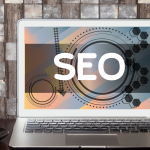In marketing, there are two primary approaches to customer acquisition: inbound and outbound marketing, each serving unique purposes and objectives. Inbound marketing centers on creating valuable content to attract and engage a specific target audience, whereas outbound marketing involves reaching out to a broader audience through advertisements and promotional messages.
Many digital marketing experts adopt a blend of both inbound and outbound strategies to craft comprehensive marketing campaigns that adapt to the evolving needs and preferences of potential customers. While inbound marketing often yields higher quality leads and a better return on investment (ROI), outbound marketing excels in rapidly spreading brand awareness and reaching a larger customer base.
So, which approach is superior? Let’s talk about the types, advantages, and disadvantages of each to provide a clearer understanding.
Inbound Marketing
Types of Inbound Marketing
- Content Marketing: Creating and distributing valuable, relevant content to attract and retain a clearly defined audience.
- Search Engine Optimization: Optimizing website structure and content to improve visibility in search engine results.
- Social Media Marketing: Utilizing social media platforms to engage with audiences, build relationships, and drive website traffic.
- Email Marketing: Sending personalized and targeted emails to nurture leads and maintain customer relationships.
- Influencer Marketing: Collaborating with influential individuals to promote products or services to their followers.
Advantages of Inbound Marketing
- Targeted Audience: Inbound marketing allows businesses to focus on attracting specific audiences who are already interested in their products or services.
- Relationship Building: By providing valuable content and engaging with audiences, businesses can build trust and long-term relationships with potential customers.
- Cost-Effectiveness: Inbound marketing strategies such as content creation and SEO have lower costs compared to outbound methods like advertising.
- Authority Establishment: Consistently providing valuable content helps businesses establish themselves as authorities in their industry, boosting credibility.
- Long-Term Outcomes: While significant results may take time, inbound marketing efforts often lead to sustainable, long-term success.
Disadvantages of Inbound Marketing
- Time-Consuming: Building an effective inbound marketing strategy requires time and effort to create valuable content, optimize SEO, and engage with audiences.
- Results May Take Time: Unlike outbound marketing, which can generate immediate results, inbound strategies often require patience as they gradually attract and nurture leads.
- Requires Consistency: To maintain effectiveness, businesses must consistently produce high-quality content and engage with audiences, which can be challenging to sustain.
- Competition: As inbound marketing grows in popularity, competition for audience attention intensifies, requiring businesses to continually innovate and differentiate their strategies.
- Difficulty Measuring ROI: While inbound marketing can yield high-quality leads, accurately measuring the ROI of various inbound tactics can be complex and challenging.
Outbound Marketing
Types of Outbound Marketing
- Advertising: Traditional forms of advertising such as TV commercials, radio ads, print ads, and billboards.
- Telemarketing: Cold calling or contacting potential customers by phone to promote products or services.
- Direct Mail: Sending physical promotional materials such as flyers, brochures, or catalogs to targeted audiences.
- Events and Trade Shows: Participating in industry events and trade shows to showcase products or services and interact with potential customers.
- Cold Emailing: Sending unsolicited emails to prospects to introduce products or services and generate leads.
Advantages of Outbound Marketing
- Immediate Results: Outbound marketing tactics like advertising and cold calling can generate immediate visibility and leads for businesses.
- Wide Reach: Outbound marketing allows businesses to reach a broad audience quickly, increasing brand exposure and awareness.
- Control Over Messaging: With outbound marketing, businesses have full control over the content and timing of their promotional messages.
- Tangible Materials: Direct mail and physical advertising materials provide tangible reminders of a business’s products or services, increasing brand recall.
- Effective for New Products: Outbound marketing can be particularly effective for new products or businesses looking to establish a presence in the market quickly.
Disadvantages of Outbound Marketing
- Intrusive: Many outbound marketing tactics, such as cold calling and unsolicited emails, can be perceived as intrusive or annoying by recipients.
- High Costs: Traditional outbound marketing methods like TV commercials and print ads can be expensive, especially for businesses with limited budgets.
- Declining Effectiveness: With the rise of ad-blocking software and consumer skepticism toward traditional advertising, outbound marketing’s effectiveness is decreasing.
- Difficulty Targeting Audiences: Outbound marketing often targets broad audiences, resulting in wasted resources and lower conversion rates compared to inbound strategies.
- Negative Brand Perception: Over-reliance on outbound marketing tactics can lead to a negative perception of a brand as pushy or outdated, especially among younger audiences more accustomed to inbound approaches.
Inbound Marketing vs. Outbound Marketing – Which Is Better?
Both inbound and outbound marketing have their place in a comprehensive marketing strategy, and the effectiveness of each depends on various factors such as target audience, industry, budget, and goals.
While inbound marketing excels in building long-term relationships and generating high-quality leads, outbound marketing can provide immediate visibility and brand awareness. Ultimately, the most successful marketing campaigns often incorporate elements of both approaches to reach and engage audiences at different stages of the buyer’s journey.
By understanding the strengths and weaknesses of each approach, businesses can tailor their marketing efforts to effectively attract, convert, and retain customers in an ever-evolving digital landscape.
Frequently Asked Questions (FAQs)
What’s the difference between inbound marketing and outbound marketing?
Inbound marketing attracts specific audiences with valuable content, while outbound marketing reaches broader audiences through advertising.
Which is more cost-effective?
Inbound marketing is generally more budget-friendly due to lower costs than outbound advertising methods.
How long until I see results with inbound marketing?
Results may take time as it focuses on building long-term relationships, unlike outbound marketing, which can yield immediate results.
Which approach is better for new businesses?
Both can be effective: outbound for quick visibility and inbound for long-term credibility and relationships.
How do I measure inbound marketing ROI?
Track metrics like website traffic, leads generated, and customer engagement, along with implementing analytics tools.
Do I have to choose between inbound and outbound?
No, many successful campaigns blend both to maximize marketing efforts and adapt to audience preferences.
Partner with Our Digital Marketing Experts for Tailored Solutions
Looking to refine your marketing approach and determine which strategy best suits your business? Our team of digital marketing experts can help you navigate the nuances of inbound and outbound marketing.
Contact us to schedule a consultation and discover how we can tailor a customized marketing plan to meet your specific needs and goals. Let’s optimize your marketing efforts for success! Click here to get started.
 logo
logo



